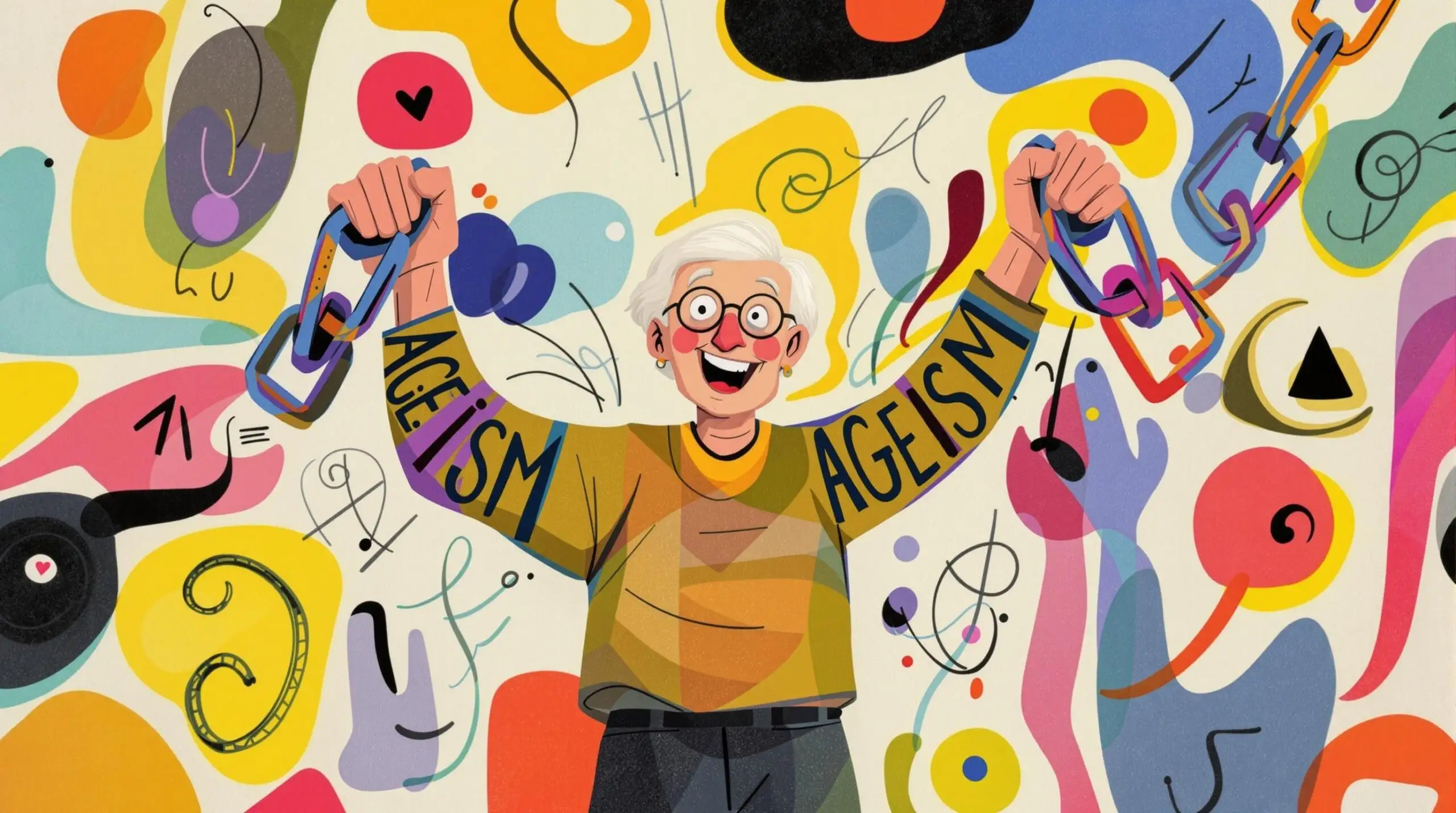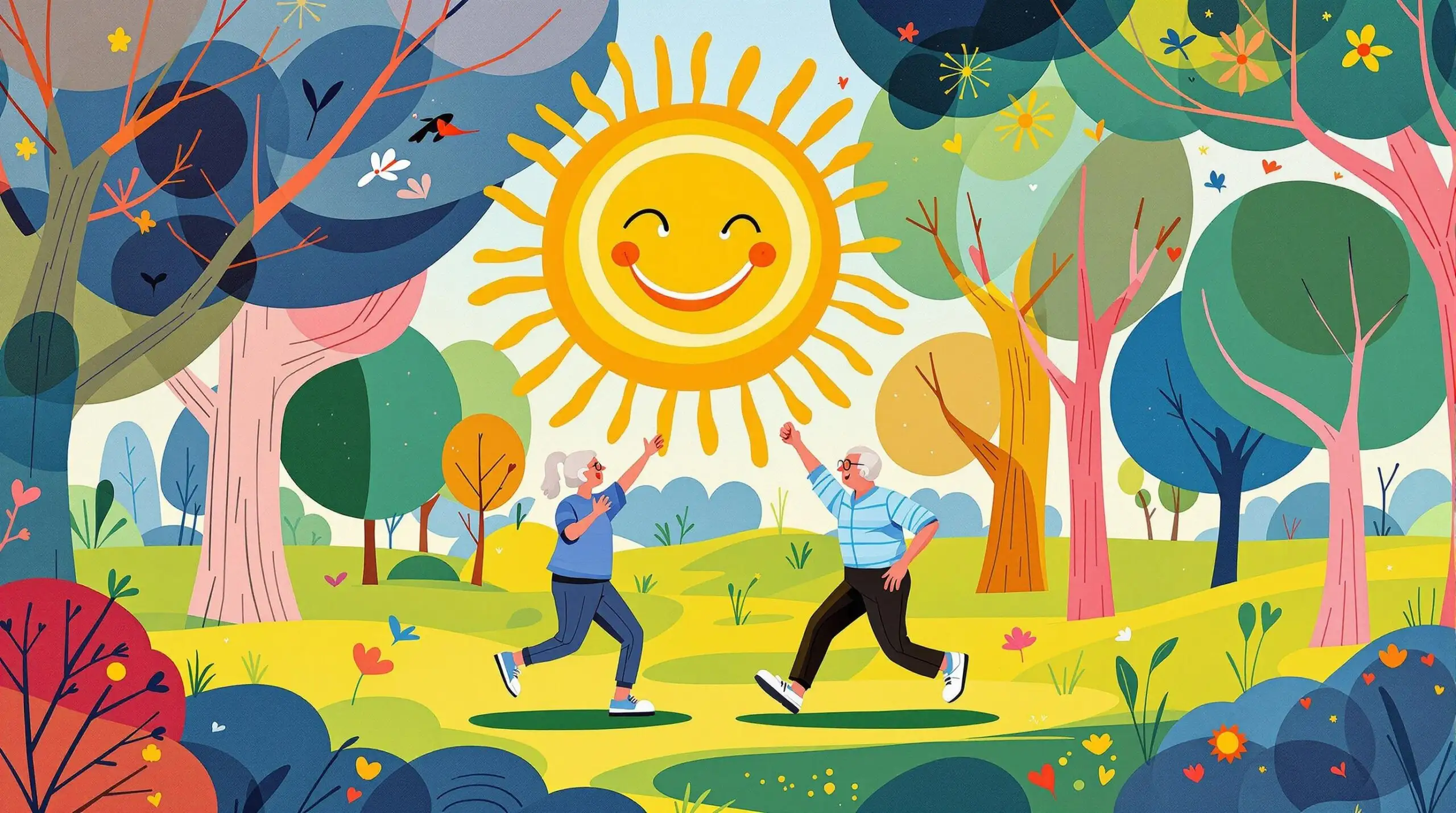Ageism’s Hidden Cost: How Stereotypes Shorten Healthspan
This post explores how age-related stereotypes can negatively impact an individual’s healthspan.

Understanding Ageism and Its Impact on Health
What is Ageism and Why Does it Matter?
Ageism kills. That’s not hyperbole – it’s hard science. While racism and sexism grab headlines, age-based discrimination quietly chips away at both lifespan and healthspan. The World Health Organization reports that ageism affects billions globally, making it one of the most accepted forms of prejudice. But unlike other discriminatory behaviors, many of us internalize these beliefs without realizing their deadly impact.
The Science Behind Age-Based Stereotypes
Research from Yale University revealed something startling: people who held positive attitudes about aging lived 7.5 years longer than those with negative views. This isn’t just about feeling good – these beliefs trigger measurable biological changes. Negative age stereotypes increase blood pressure, stress hormones, and inflammation markers. They’re basically aging accelerants in disguise.
Origins and Evolution of Age Discrimination
Age discrimination didn’t spring up overnight. Historical records show that attitudes toward aging have fluctuated dramatically across cultures and centuries. Ancient societies often revered their elders, while industrialization brought a shift toward youth worship. Modern culture’s obsession with productivity and innovation has only amplified these biases, creating what some researchers call a “pro-youth tyranny.”
Challenges and Common Misconceptions
The most damaging myth? That decline is inevitable. This belief becomes a self-fulfilling prophecy. When people expect to become frail, forgetful, or irrelevant, they often unconsciously alter their behaviors to match these expectations. They might stop exercising, learning new skills, or engaging socially – all vital activities for maintaining health and cognitive function.
Statistics and Research Findings
The numbers paint a grim picture. Studies show that exposure to negative age stereotypes can increase cardiovascular stress by 56%. Research from the University of California found that ageist attitudes contribute to $63 billion in excess annual healthcare costs. Perhaps most alarming, internalized ageism correlates with a 30% higher risk of developing dementia.

The Biology of Ageism’s Impact
How Stereotypes Get Under Our Skin
Negative age beliefs literally reprogram our biology. When we internalize ageist messages, our bodies respond with increased inflammation, reduced immune function, and accelerated cellular aging. It’s like downloading a virus into our biological operating system – one that speeds up the aging process.
The Stress Connection
Age discrimination triggers the body’s stress response system. Chronic exposure to ageist attitudes elevates cortisol levels, which in turn affects everything from immune function to memory formation. This constant stress activation creates wear and tear on vital systems, accelerating biological aging.
The Social and Psychological Dimensions
Mental Health Impact
Depression rates soar when people internalize ageist beliefs. Research shows that older adults who accept negative age stereotypes are three times more likely to develop depressive symptoms. This mental health burden creates a cascade of physical health problems, from reduced activity levels to increased inflammation.
Social Isolation and Loneliness
Ageism often leads to social exclusion. When society views aging as inherently negative, older adults may withdraw from social activities. This isolation isn’t just unpleasant – it’s deadly. Studies link social isolation to increased risks of heart disease, stroke, and premature death.
Healthcare Discrimination
Medical ageism manifests in multiple ways. Older patients often receive less aggressive treatment for conditions, have their symptoms dismissed as “normal aging,” or get excluded from clinical trials. This systematic discrimination leads to poorer health outcomes and reduced quality of care.
Practical Strategies to Combat Ageism
- Challenge negative age stereotypes whenever you encounter them
- Cultivate relationships across age groups
- Stay engaged in meaningful activities regardless of age
- Advocate for age-inclusive healthcare practices
- Maintain physical activity and social connections
- Continue learning new skills throughout life
- Share positive aging stories and role models
- Support age-diverse workplaces and communities
- Practice self-awareness about internalized ageism
- Educate others about ageism’s health impacts
Building Age-Positive Communities
Creating age-friendly environments isn’t just nice – it’s necessary for public health. Communities that embrace age diversity show better health outcomes across all age groups. This includes designing spaces that encourage intergenerational interaction, supporting lifelong learning programs, and ensuring accessible healthcare services.
Workplace Impact
Age discrimination in employment doesn’t just hurt careers – it damages health. Studies show that older workers who face workplace ageism experience more health problems and earlier cognitive decline. Companies that practice age inclusion, on the other hand, report better overall employee health and reduced healthcare costs.
Media Representation Matters
How we portray aging in media directly affects health outcomes. Positive representations of older adults correlate with better physical function and cognitive performance in aging populations. Yet only 15% of media content features older adults in non-stereotypical roles.
Breaking the Cycle: Solutions and Strategies
Personal Interventions
Individual actions make a difference. Research shows that actively rejecting negative age stereotypes can improve physical function and cognitive performance. Simple practices like maintaining a gratitude journal about aging or challenging automatic negative thoughts about getting older can significantly impact health outcomes.
Healthcare Solutions
Medical professionals need specific training to recognize and address age bias. Some hospitals now implement mandatory age-sensitivity training, resulting in improved patient outcomes and reduced healthcare costs. These programs show that addressing ageism in healthcare settings saves both lives and money.
Policy Changes
Legislative action plays a crucial role. Countries with strong age discrimination laws show better health outcomes among older populations. Policy changes that promote age inclusion in employment, healthcare, and social services create measurable improvements in population health.
Future Directions and Research
Emerging research focuses on quantifying ageism’s biological impacts and developing targeted interventions. Scientists are investigating how positive age beliefs might actually reverse some aging markers at the cellular level. New studies examine the potential for intergenerational programs to improve health outcomes across age groups.
The evidence is clear: ageism shortens lives and damages health. But this knowledge also points to solutions. By addressing age discrimination at personal, social, and institutional levels, we can extend not just lifespan but healthspan. Creating age-positive environments benefits everyone – after all, if we’re lucky, we’ll all grow old. The question is whether we’ll do so in a world that supports or undermines our health and potential.